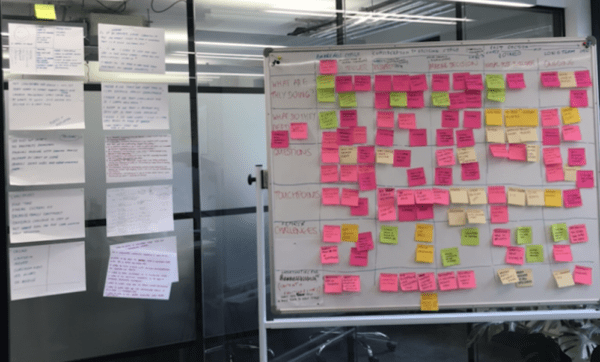Planning user journeys into your website redesign project

A user journey is a route a user may take in order to achieve their goal whilst using a specific website.
What is user journey mapping?
When designing a website user journeys are used to highlight the various ways the site allows the user to easily achieve their goals, as easily as possible. User journey mapping is a great way to consider the stages which the user will go through before, during, and after purchasing a product/service via a company’s website. These user journeys are then referred to throughout the redesign of a website to create a solution that ensures the website appropriately fulfils the user’s needs.
‘How do people actually use our product?’
This is a fundamental question that every product creator must answer. In order to answer this question, product designers need to understand the essence of the whole experience from the user’s perspective.
Nick Babish, Editor in Chief, UX Planet
User journey mapping allows us to get into the shoes of the user in order to experience the user’s perspective. It enables you to visualise the step by step process which a person will go through to reach their goals.
The benefits of journey mapping include forcing conversation from the clients broader team, not just marketing, around the wider customer experience. This also ensures everyone in the client team is aligned with who their users are, and what they need. Doing this places an emphasis on considering the users needs throughout the redesign process of a website, and ultimately delivering a highly user centric project.
Before you start mapping, consider your user persona
Before starting the user journey planning it is important to establish who your users are. This can be done through defining user personas. A user persona identifies the key user’s needs, motivations, challenges, triggers, and online habits. This helps to identify a scenario for the user’s situation and expectations of the website the user may have, along with how the website specifically can support their journey.
What is the user journey mapping process?
User journeys start with mapping out a series of actions taken by the user onto a timeline. These actions are then fleshed out with thoughts and emotions that the user may experience, to form a narrative of the user in 5 stages.
Every client has a slightly different journey and associated stage, but for example five stages of a user journey might be:
- Trigger (Awareness): Becoming aware of a problem or opportunity
- Consideration (Early): Defining the problem or opportunity & researching different methods of solving it
- Decision (mid-late): Researching options within the chosen approach & finalising the decision internally
- Initial post-purchase: Onboarding and evaluation
- Ongoing: Long term support, retention & trajectory
A good way to map out the user journey can be in a spreadsheet. Outline the user journey stages at the top, and then on the left column you can break down what the user is doing, what they need, any questions they may have, touchpoints, and any fears and challenges they may face.

It is important to consider the product or service the user will be looking for as this will help put you in the right frame of mind for the user and their needs. Going through each stage will identify any problems or issues the user may have, as well as what they need/look for in a website.
After thinking through the 5 stages of a user journey, it should be clear as to what the website needs to do in order to cater for the user’s needs.
The final step of the journey map is to consider the opportunities available in regards to content and technology/functionality that will help move the user onto the next stage in accordance with the marketing and business objectives of the project. This helps the business identify what they could do within their website redesign project to aid a better experience on their new site.
Avoid pre-existing biases
A challenge when creating user journeys within the business is that there is potential for the stakeholders to gravitate towards pre-existing views within the business, or their own opinions rather than the thoughts, emotions, and needs of their users. To avoid this happening it is important to base the insights on externally conducted independent user research where possible, and to gather consensus across internal teams within the business.
In order to do this, you would look at creating stakeholder interviews or a workshop to capture the whole business perspective. A biased opinion of the business’ users can also be avoided by involving some of the business’ existing customers in the process of the user journeys or by conducting user research beforehand to ensure no assumptions are made.
At ClarityDX, we’re always focused on making sure a web design project successfully meets the needs of the user. By creating user journeys with our clients it allows them to position themselves as the users and consider any issues or problems the user may encounter on their customer journey. This will mean that challenges in relation to content or functionality are more likely to be identified, considered, and resolved in the redesign of a new website.
To sum up, user journey mapping is a great exercise for a client to consider their customer’s experience. Therefore, it is essential that there is a proper briefing on the purpose of mapping a user journey, to ensure it is seen as a practical tool rather than just a workshop exercise. It’s also good practice to emphasise to the wider client side stakeholder group that the user journey mapping exercise can be helpful in making decisions about the wider marketing and business strategy, not just in isolation of the website project itself.

Meet the team: Sasha

ClarityDX lockdown communication while WFH
Let's Talk
Do you have a web design and build project coming up that you would like to talk about?